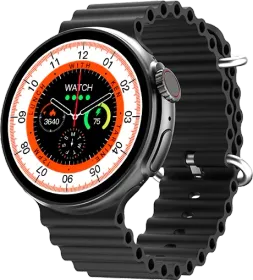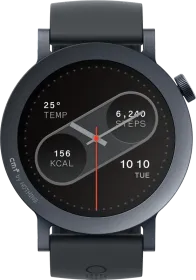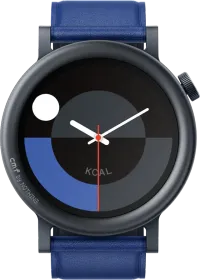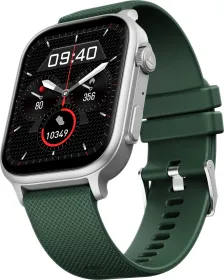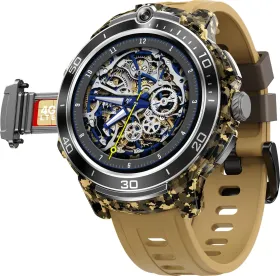Extending its flagship Dimensity 9400 series, MediaTek has recently unveiled the Dimensity 9400e system-on-chip. It is the third entrant in the lineup after the Dimensity 9400 and the Dimensity 9400+ models. While the other two flagship chips are based on 3nm fabrication technology, the Dimensity 9400e relies on TSMC’s 4nm technology.
But exactly how does it compare to the Dimensity 9400? Here’s a detailed comparison to help you figure out the differences between the two chipsets.
Dimensity 9400e vs. Dimensity 9400: Tech Specs
| Dimensity 9400e | Dimensity 9400 | |
| Fabrication Process | TSMC 4nm | TSMC 3nm |
| CPU | Octa-core Kryo CPU 1x 3.4 GHz (Cortex-X4) 3x 2.85 GHz (Cortex-X4) 4x 2.0 GHz (Cortex-A720) | Octa-core Kryo CPU 1x 3.63 GHz (Cortex-X925) 3x 3.3 GHz (Cortex-X4) 4x 2.4 GHz (Cortex-A720) |
| GPU | Immortalis-G720 GPU Hardware-accelerated raytracing | Immortalis-G925 GPU Hardware-accelerated raytracing |
| NPU | MediaTek NPU 790 (Generative AI) MediaTek NeuroPilot | MediaTek NPU 890 (Generative AI, Agentic AI) |
| ISP / Camera | 18-bit RAW ISP Max Res: 320MP Max Video: 8K30 | Imagiq 1090 ISP Max Res: 320MP Max Video: 8K60 |
| Connectivity | Wi-Fi 7, Bluetooth v6.0 (with dual Bluetooth engine) | Wi-Fi 7, Bluetooth v6.0 (with dual Bluetooth engine) |
| Modem | MediaTek M90 5G modem Peak download speed of 7 Gbps Supports Sub-6GHz and mmWave 5G networks | 3GPP Release-17 5G modem Peak download speed of up to 7.3 Gbps Supports Sub-6GHz 5G networks |
| Memory & Storage | LPDDR5X RAM (up to 8533 MHz) UFS 4.0 + MCQ storage | LPDDR5X RAM (10667 MHz) UFS 4.0 + MCQ storage |
| Supported Display | 4K up to 120GHz WQHD up to 180Hz | WQHD+ 180Hz Tri-port MIPI for Tri-Fold Displays |
Dimensity 9400e vs. Dimensity 9400: Supported Display
The newly-launched Dimensity 9400e chipset supports 4K screen resolution up to 120Hz and WQHD resolution up to 180Hz. In comparison, the flagship Dimensity 9400 supports WQHD+ displays for up to 180Hz of refresh rate. Further, it also includes a tri-display port for tri-fold displays.
Also Read: MediaTek Dimensity 9400 Vs. Qualcomm Snapdragon 8 Elite: Early Benchmarks Comparison
Dimensity 9400e vs. Dimensity 9400: CPU

The eight-core Dimensity 9400e CPU comprises a 3.4GHz prime core, three 2.85GHz balanced cores, and four 2.0GHz efficient cores. It also has an 8MB L3 cache and a 10MB SLC (system-level cache). Moreover, the chipset has the same 1 + 4 + 3 configuration as the flagship Dimensity 9400.
On the Dimensity 9400 SoC, there’s a 3.63GHz prime core (Cortex-X925 instead of Cortex-X4 on the Dimensity 9400e), three 3.3GHz performance cores, and four 2.4GHz efficient cores. The chipset has a larger 12MB L3 cache, though the 10MB SLC (system-level cache) remains similar.
Between the processors, the Dimensity 9400’s CPU cores have a higher frequency, implying that they would provide better performance and should be able to handle more demanding workflows with ease. Further, a larger 12MB L3 cache on the Dimensity 9400 can hold more frequently accessed data and instructions, improving the general performance.
However, the Dimensity 9400e provides enough performance for a premium-midrange device, much like Qualcomm’s Snapdragon 8s Gen 4.
Dimensity 9400e vs. Dimensity 9400: GPU

The Dimensity 9400e features the Arm Immortalis-G720 12-core GPU, which, per MediaTek, delivers impressive raytracing performance and console-quality global illumination effects.
The company has also included support for HyperEngine gaming for smoother, longer gameplay sessions, Adaptive Gaming Technology (MAGT 2.0), and Frame Rate Converter (MFRX 2.0+), for providing up to 40% power savings in popular gaming titles.
Even though the Dimensity 9400e has a capable GPU, the Immortalis-G925 MC12 GPU on the Dimensity 9400, based on ARM’s latest architecture, should offer better in-game performance with PC-grade raytracing that enhances the perceived depths in scenes.
Based on Arm’s new 5th-generation CPU architecture, the Immortalis-G925 GPU supports MediaTek Adaptive Gaming Technology (MAGT 3.0) and HyperEngine’s Super Resolution for enhancing picture quality. It also uses new opacity micromaps (OMM) for reduced gameplay rendering, additional visual details, and realistic effects in mass materials like vegetation, hair, etc.
It is worth mentioning that the Immortalis-G720 MC12 on the Dimensity 9400e carries the same name as the GPU of the Dimensity 9300+ processor (launched by MediaTek in May 2024).
For reference, the Immortalis-G720 MC12 GPU scores around 87K points on the AnTuTu 10 benchmark, while the Immortalis-G925 scores around 110K points. Unless MediaTek has tweaked the GPU for better performance, one should expect a similar gap between the Dimensity 9400e and the DImensity 9400 GPUs.
Also Read: Dimensity 9400 Vs. Dimensity 9300: How Do MediaTek’s AI-Enabled Chips Compare?
Dimensity 9400e vs. Dimensity 9400: NPU

The new Dimensity 9400e features MediaTek NPU 790 with NeuroPilot SDK, which unlocks support for large language models with multi-modality (LLM), large vision models (LVM), and additional language models (SLM + LLM), including DeepSeek-R1-Distill with on-device processing, a new LLM for Gemini Nano with multi-modality, and LoRA Fusion.
Moreover, the Dimensity 9400e’s NPU should be able to handle most of the on-device GenAI features. However, it looks like MediaTek has reserved the Agentic AI features for its flagship chipset, the Dimensity 9400.
Per the official product page, the Dimensity 9400 comes with the MediaTek NPU 890, which supports long content, faster LLM speculative speed, additional language models, and can process multi-modal inputs. What takes the NPU to the next level is the world’s first Agentic AI engine, ready for developers and high-quality on-device video generation.
The MediaTek NPU 890 also includes on-device LoRA training, Diffusion Transformer (DIT), and Mixture of Experts (MoE), the latest LLM support. Given that the NPU provides 100% better diffusion generation and 80% better LLM prompt performance than the Dimensity 9300’s NPU, it should retain its superior status over the Dimensity 9400e’s NPU (which uses the same NPU as the previous-generation flagship).
Dimensity 9400e vs. Dimensity 9400: ISP

Users get an 18-bit RAW ISP on the Dimensity 9400e chipset, capable of capturing flagship-class quality with zero-latency preview. Further, its AI Semantic Analysis Video Engine offers 16 scene segmentation categories for optimized visual enhancement. The ISP also supports up to three microphones that can record high dynamic-range sound while minimizing wind and ambient noise.
While the Dimensity 9400e supports a maximum camera sensor of 320MP, it can capture 8K30a nd 4K60 videos.
The Dimensity 9400’s Imagiq 1090 ISP can do everything that the Dimensity 9400e does. Further, it also adds features like full-range HDR video zoom and Generative AI Super Resolution to enhance details in higher zoom ranges (using corrective fill). It ensures 4K60 videos for up to three hours with reduced power consumption.
While the Imagiq 1090 ISP maximum resolution support remains at 320MP, it can capture 8K60 videos.
Also Read: No mmWave for MediaTek’s Dimensity 9400: What Does it Mean for 5G?
Dimensity 9400e vs. Dimensity 9400: Memory & Connectivity

The Dimensity 9400e supports LPDDR5X RAM with a maximum frequency of 8,533 MHz. The chipset is also compatible with UFS 4.0 + MCQ storage. In contrast, the Dimensity 9400 supports higher frequency LPDDR5X RAM (clocked at 10,667 MHz), along with UFS 4.0 + MCQ storage.
The M90 5G modem on the Dimensity 9400e chipset provides access to Sub-6GHz and mmWave 5G networks, which is missing from the flagship Dimensity 9400 SoC. Other connectivity features include Wi-Fi 7 (with 7.3 Gbps peak data rate), Bluetooth v6.0 (with a connection range of up to 5km in line of sight), GPS (L1CA + L5 + L1C), BeiDou, Glonass, Galileo, QZSS, and NavIC.
Additional connectivity-related features include MediaTek Xtra Range 3.0, Wi-Fi/BT Hybrid Coexistence 3.0, up to 7 Gbps downlink performance on cellular network, and dual-SIM dual-active.
On the other hand, the Dimensity 9400 features the 3GPP Release-17 5G modem, which doesn’t receive mmWave signals, which isn’t a significant drawback in the Indian subcontinent. Other connectivity features include Wi-Fi 7 (with 7.3 Gbps peak data rate), Bluetooth 6.0 (with a 1.5 km range between smartphones in line of sight), GPS (L1CA+L5+L1C), BeiDou, Glonass, Galileo, QZSS, and NavIC.
The Dimensity 9400’s modem uses a new 4nm Wi-Fi/Bluetooth combo chip that reduces the power consumption by 50%. Then, there are features like AI Network Suite that improve overall performance, and UltraSave 4.0 that reduce overall power consumption.
While the Dimensity 9400 dominates the Dimensity 9400e in all other aspects, the latter’s modem offers connectivity to both mmWave and Sub-6GHz 5G networks, making the chipset more suitable for global manufacturers. Further, it provides a higher Bluetooth phone-to-phone connectivity range.
Also Read: Snapdragon 8s Gen 4 vs. 8s Gen 3: How Do The Premium Mid-Range Processors Compare?
Dimensity 9400e vs. Dimensity 9400: Conclusion
This comparison shows us that the Dimensity 9400e sits right below the Dimensity 9400 chip in terms of CPU, GPU, NPU, and all other aspects (except connectivity), making it a more suitable chipset for entry-level flagships or premium mid-range smartphones.
Globally, the Dimensity 9400e will power the OnePlus 5 Ace 5 Ultra. In India, the chipset will debut with the upcoming realme GT 7 series, which will break cover on May 27, 2025.
You can follow Smartprix on Twitter, Facebook, Instagram, and Google News. Visit smartprix.com for the latest tech and auto news, reviews, and guides.

















